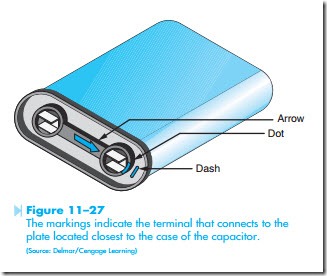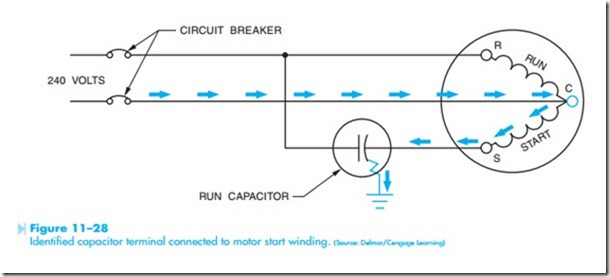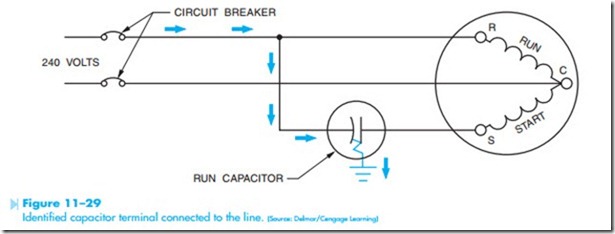IDENTIFYING CAPACITOR TERMINALS
Most run capacitors and some starting capacitors are of the oil-filled type, Figure 8–15. This is especially true for high current motors such as those used to operate compressors. Many manufacturers
of oil-filled capacitors will identify one terminal with an arrow, a painted dot, or by stamping a dash in the capacitor can, Figure 11–27. This identified terminal marks the connection to the plate that is located nearer to the metal container or can. It has long been known that when a capacitor’s dielectric breaks down and permits a short circuit to ground, it is most often the plate nearer to the outside case that becomes grounded. For this reason, it is desirable to connect the identified capacitor terminal to the line side instead of to the motor start winding.
In Figure 11–28, the run capacitor has been connected in such a manner that the identified terminal is connected to the start winding of a compressor
motor. If the capacitor shorts to ground, a current path would exist through the motor start winding. The start winding is an inductive-type load and inductive reactance will limit the value of current flow to ground. Since the flow of current is limited, it will take the circuit breaker or fuse time to open the circuit and disconnect the motor from the power line. This time delay can permit the start winding to overheat and become damaged.
In Figure 11–29, the run capacitor has been connected in such a manner that the identified terminal is connected to the line side. If the capacitor shorts to ground, a current path would exist directly to ground, bypassing the motor start winding. When the capacitor is connected in this manner, the start winding does not limit current flow and allows the fuse or circuit breaker to open almost immediately.


